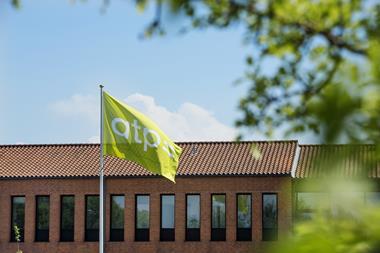IRELAND – Pension funds for some of the largest listed companies in Ireland have reduced their equity exposure by more than 10% over the last year, according to a survey by LCP.
The consultancy's annual Pensions Accounting Briefing also suggested there would soon be an increased use of contingent assets to improve funding positions, after the 32 companies surveyed used the €1.2bn in annual contributions to address deficits, "rather than boosting benefit accrual for current employees".
According to the survey, the asset allocation of the surveyed funds shifted slightly year on year, with a 6-percentage-point change in equity allocation.
Funds instead opted for an increased exposure to bonds, accounting for 35% of assets compared with equity's 52%.
"As bonds outperformed equities during the year – which, when adjusted for currency movements, showed little or no gains during 2011 – part of the trend can be attributed to increases in bond holdings, which have occurred in an organic fashion," the survey said.
"Regardless of the cause for the change in asset holdings, pension schemes now have lower-risk investment strategies, which should benefit them in future years."
Last year's report noted that DB funds were implementing de-risking at a "frustrating" speed, with equity exposure higher than most comparative defined benefit (DB) markets.
Trustees opted to invest the remaining 13% in other, undefined assets.
Speaking with IPE, LCP Ireland partner Martin Haugh also addressed the use of contingent assets in underfunding.
The consultancy's report noted that while drinks company Diageo had used €200m worth of mortgages to shore up its Irish fund – reporting a deficit down by a third to €912m at the end of June last year – certain types of contingent asset would remain difficult to use.
"For the vast majority of companies we have looked at here – with the exception of Diageo and Greencore – their main centre of business is Ireland," he said.
"That's where their parent is based, and they wouldn't necessarily in a position to obtain a parental guarantee."
Parental guarantees are one of the more common contingent assets employed by UK pension funds according to recent data released by the country's pensions regulator.
"A lot of schemes would use contingent assets," he said.
However, he noted that because property-based contingent assets needed to be debt-free, companies were often unable to take advantage of the funding approach after being denied debt funding in the open market and needing to use property portfolios as collateral.
The report added: "We expect these types of asset-backed funding solutions to feature more often as companies seek to balance pension funding requirements with other calls on the companies' cash flow."
LCP further noted that impending changes to IAS19 accounting standards would also impact many companies' profits.
The changes, effective from next year, would have resulted in companies recording €100m less profit had they applied in 2011, but the individual impact would have varied based on the assumptions employed by each company.
"For example, Bank of Ireland's reported profits would have reduced by about €23m, while Irish Bank Resolution Corporation (IBRC) would have reported profits increasing by about €0.5m," the report said.
IBRC's legacy pension fund, previously the Anglo Irish Bank DB arrangement, is also the only fund to have exceeded full funding, increasing its funding level by 10 percentage points year on year to 111%.
The fund also reported the lowest equity exposure of those surveyed, only allocating 23% to the asset class.












No comments yet